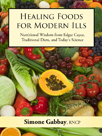
Halloween pumpkins are specially cultivated to serve as decoration for the season, but are not without nutritional potential: their seeds, which are delicious roasted, are high in minerals, especially zinc, magnesium, manganese, and phosphorus. Pumpkin seeds are considered to have anti-inflammatory properties. Salute to the mighty pumpkin, and Happy Halloween! |
Jerusalem Artichokes Are Back in Season! A gnarled tuber resembling a knotty potato, the Jerusalem artichoke has no relation to the more popular globe artichoke. The first part of its name, Jerusalem, is equally misleading, since the name "Jerusalem artichoke" is said to have its origin in the Italian word for sunflower, girasole, so named because the top part of the Jerusalem artichoke resembles a sunflower. The Cayce readings recommend the Jerusalem artichoke as a medicinal food for numerous conditions, notably for diabetic tendencies, but also for anemia, toxemia, and other debilitative conditions. Nutrition experts today agree that the Jerusalem artichoke is helpful for those with blood sugar problems: inulin, a soluble fiber found in Jerusalem artichokes, stabilizes blood glucose levels. Jerusalem artichokes are in season from November through May in the northern hemisphere and are available at natural food stores and some supermarkets. They may be prepared and cooked just like a potato, or chopped into soups, stews, and casseroles. As indicated in reading 2007-1, Edgar Cayce sometimes suggested that raw and cooked Jerusalem artichokes be alternated in the diet: "At least four meals each week should include the Jerusalem artichoke in the diet. One time this should be cooked, the next time raw. When cooked, prepare as you would a boiled potato; not boiled too much, but sufficient that it crumbles—and keep the juices of same. Hence, cook in Patapar paper." |
Simone's Healthy Recipes Hearty Vegetable Bean Soup Nothing satisfies a growling stomach and lifts the spirit like a hearty bowl of soup on a crisp autumn day. Make a large-enough batch of this yummy soup to have enough left over for another meal—it tastes even better the second day!
Chop all veggies and set aside. Set 2 cups of water on to boil. Add the chopped vegetables in the order given (allow each veggie to cook just a bit before adding the next one). Add more water as required. Cook on medium heat for 25-30 minutes. Add seasonings and more water (if required). Garnish with freshly chopped parsley. Serve with whole-grain bread and butter or olive oil. Top bread with cheese, cream cheese, nut butter, or hummus for protein if desired. Makes 6-8 servings. |
|
Healing Foods for Modern Ills: Nutritional Wisdom from Edgar Cayce, Traditional Diets, and Modern Science outlines the holistic nutritional recommendations given in the Edgar Cayce readings and correlates them with traditional diets, as well as with modern scientific findings.
This comprehensive e-booklet is a stand-alone topic excerpt from the book Visionary Medicine: Real Hope for Total Healing by Simone Gabbay. |
We wish all our readers a happy and healthy autumn season! Simone Gabbay and the edgarcaycediet.com team For more information about Edgar Cayce's Diet Plan for Optimal Health and Weight Loss, visit our website at http://www.edgarcaycediet.com or view the book trailer at http://www.edgarcaycediet.com/video.htm. To subscribe to this newsletter, send an e-mail to info@edgarcaycediet.com with "subscribe" in the subject line. To unsubscribe, send an e-mail to info@edgarcaycediet.com with "unsubscribe" in the subject line. Thank you. Photos and design by Benjamin Gabbay |

 Ingredients
Ingredients
